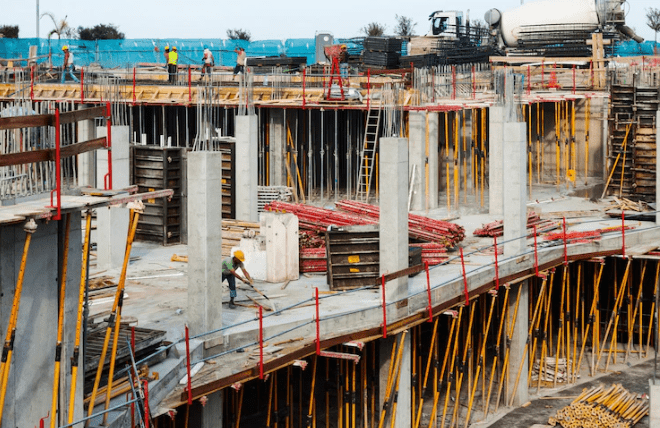6 Elements to a Successful Construction Sites

The most successful construction sites rely on efficiency and safety elements to complete projects on time, on budget, and without unnecessary hazards. From using quality tools to gamifying the construction site, explore six elements to make your next construction project successful.
Safety Elements
In 2019, about 20% of workplace fatalities were construction-related. Avoiding unnecessary safety risks is paramount to a successful construction site. It keeps workers on the job, ensures OSHA compliance, and improves worker morale. Implement these three safety elements on your construction site to reap the benefits.

Consistent safety training
Safety training is the cornerstone of a safe and successful construction site. Consistent safety training boosts worker awareness of hazards, creates specialized workers for specific duties, and enhances communication between workers and site managers. Boosting worker hazard awareness is key to avoiding injuries. Successful construction sites keep their workers safe by teaching them about new tools, new projects, and the special safety hazards present on the job. Workers should be aware of and help create protocols to minimize and avoid risks.
Specialized safety training for workers who perform specific duties like operating mini-skids or working on scaffolding is necessary for a safe and efficient construction site. Workers not trained in that area should still recognize its hazards and control measures. Workers should also be trained on the proper use of PPE equipment, including eye and hearing protection.
The average construction site produces noise at decibels levels over the maximum 85dB recommended by the National Institute for Occupational Safety and Health (NIOSH). Forklifts regularly emit sounds over 90dB, while hammer drills can produce up to 120db, the threshold for permanent hearing damage. The most successful safety training revolves around employee participation. This includes setting safety goals, reporting hazards, and tracking progress. Open communication between employees and management is necessary for this to be possible.
High-quality tools
Successful construction sites outfit their workers with high-quality tools and personal protection equipment (PPE) because they are safe and increase productivity. For instance, working with concrete requires sharp diamond blades for accurate cuts and blade longevity. When in good condition, concrete tools like wet saws and compaction equipment ensure your job is done right and without worker over-exertion. Over-exertion is an ergonomic health risk as it can lead to musculoskeletal injuries.
Personal protective equipment minimizes worker exposure to common hazards. Gloves, helmets, glasses, and ear protection are used on successful construction sites. The construction company should provide these as PPE use is necessary for worker safety and OSHA compliance. In addition to purchasing and using high-quality equipment, you also need to track usage and maintenance schedules to ensure that each worker has the right tool for the job when they need it.
Tool management is a time-consuming process without a proper tool management system. Many construction sites rely on tool management software to keep track of all their tools and schedule predictive maintenance. Predictive maintenance is essential for worker safety because it optimizes tool performance. PPE like helmets also need consistent monitoring because UV light exposure can result in unsafe degradation.
OSHA compliance
Successful construction sites are OSHA compliant because they keep their job sites safe and ensure they do not accrue costly penalties. OSHA supplies construction sites with a seven-step guide that identifies the major guidelines a construction site should keep in mind.
The steps include information on common hazards, workplace survey methods to locate unique risks, training advice and requirements, and recordkeeping requirements. While this guide is an excellent place to start, a successful workplace continuously monitors its OSHA compliance regulations. If a job site violates the OSHA mandates, multi-thousand dollar fines are likely.
Efficiency Elements
Two measures of success for construction projects are finishing on time and within budget. This requires efficient work and resource use. Successful construction sites use construction management software, frequent and open communication, and the gamification of work to finish projects on time and within budget.
Construction management software
Small contractors and large megaprojects use construction management software to track material needs, fill out progress reports, store important documents, and more.
By tracking essential metrics and storing documents all in one interface, construction management software makes it easy to stay on track. Some construction management software is built specifically for contractors and includes scheduling tools, client relationship management, and even personal marketing. For larger projects, the software can enhance capital planning and bid management.



